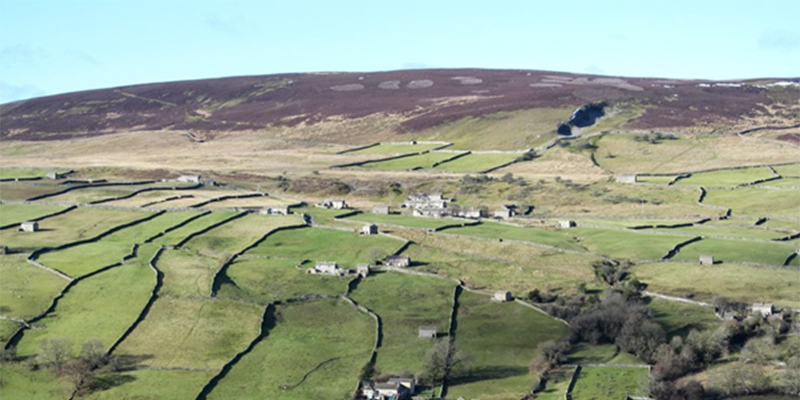To achieve 30 by 30 in deeply cultural landscapes, conservation biologists need to speak to archaeologists
In the new research paper published in People and Nature, led by post doctoral research associate Michael Stratigos, an important archaeological dataset, Historic Landscape Characterisation, has been brought to bear on how protected areas are biased not only for certain types of physical landscapes and habitats, but also to certain types of historic cultural landscapes.

Protected areas are a key part of biological conservation efforts and they are set to gain an even more critical role as world governments agree to protect 30% of land and sea by 2030 – the 30 by 30 ambition of COP15 being hosted in Montreal this month. It is widely agreed that protected areas are centrally important tools to fight biodiversity declines, protect native and endemic species, as well as provide benefits to people and local societies. While there is rightfully a lot of attention paid to the strict ecological science behind these biological conservation strategies, protected areas, as a spatially explicit method, inherently involve other facets of whatever area they intend to protect. This includes the historic and cultural dimensions of protected areas.
In turn, the historic and cultural dimensions of any protected area usually has an impact on the ecology being protected, for instance how historic land-use might shape the types of biodiversity an area contains or becomes known for (scientifically or popularly). There is increasing awareness from the biological conservation community of some of these aspects of the historic and cultural landscapes within protected areas, however, bringing historic and archaeological data to bear on questions of protected area effectiveness and representativeness of important biodiversity has been rare.
In a new research paper published today in People and Nature led by Michael Stratigos along with other Leverhulme Centre for Anthropocene Biodiversity researchers Caroline Ward (formerly based at LCAB), Jack Hatfield (Biology) and Jonathan Finch (Archaeology) an important archaeological dataset, Historic Landscape Characterisation, has been brought to bear on how protected areas are biased not only for certain types of physical landscapes and habitats, but also to certain types of historic cultural landscapes.
Using this archaeological insight in an area of northern England, the paper reveals that 18th and 19th century land-use changes dominate protected areas. Moreover, protected areas focus in on regions where the features from this time period survive particularly well and visibly in the modern landscape. Quantifying this using historic landscape archaeology is a major first step to examining how this influences the biodiversity protected. It remains unclear exactly how the transformations of the 18th and 19th centuries influence biodiversity. Direct observations from other historic datasets is patchy, and the paper highlights addressing these historic land-use changes as an important area for future research.
Beyond the biodiversity itself, the paper highlights how this historic landscape data demonstrates the influence of land ownership, especially of large estates, on the English protected area network. There is clearly an outsized influence of the largest landowners in the country. The management of the land protected for biodiversity is largely given over to private landowners, and thus they will clearly be an important pillar of improving biodiversity outcomes from protected areas. This is not an especially surprising result, however, the historic data here show how the form and character of ownership is in greater part a legacy of the 18th and 19th centuries.
The paper argues that designation of large estates likely entrenches or even exacerbates access inequalities to the landscapes themselves, but perhaps more importantly to decision making around them. Expansion of protected areas to meet 30 by 30 targets will need to consider how to ensure that it doesn’t widen gaps in equity between wealthier and poorer groups. Our results show that greater consideration of historic landscape character could help to redress some of the entrenched biases in the UK’s protected area network with positive outcomes for biodiversity conservation but also for people who live in and near these protected areas.